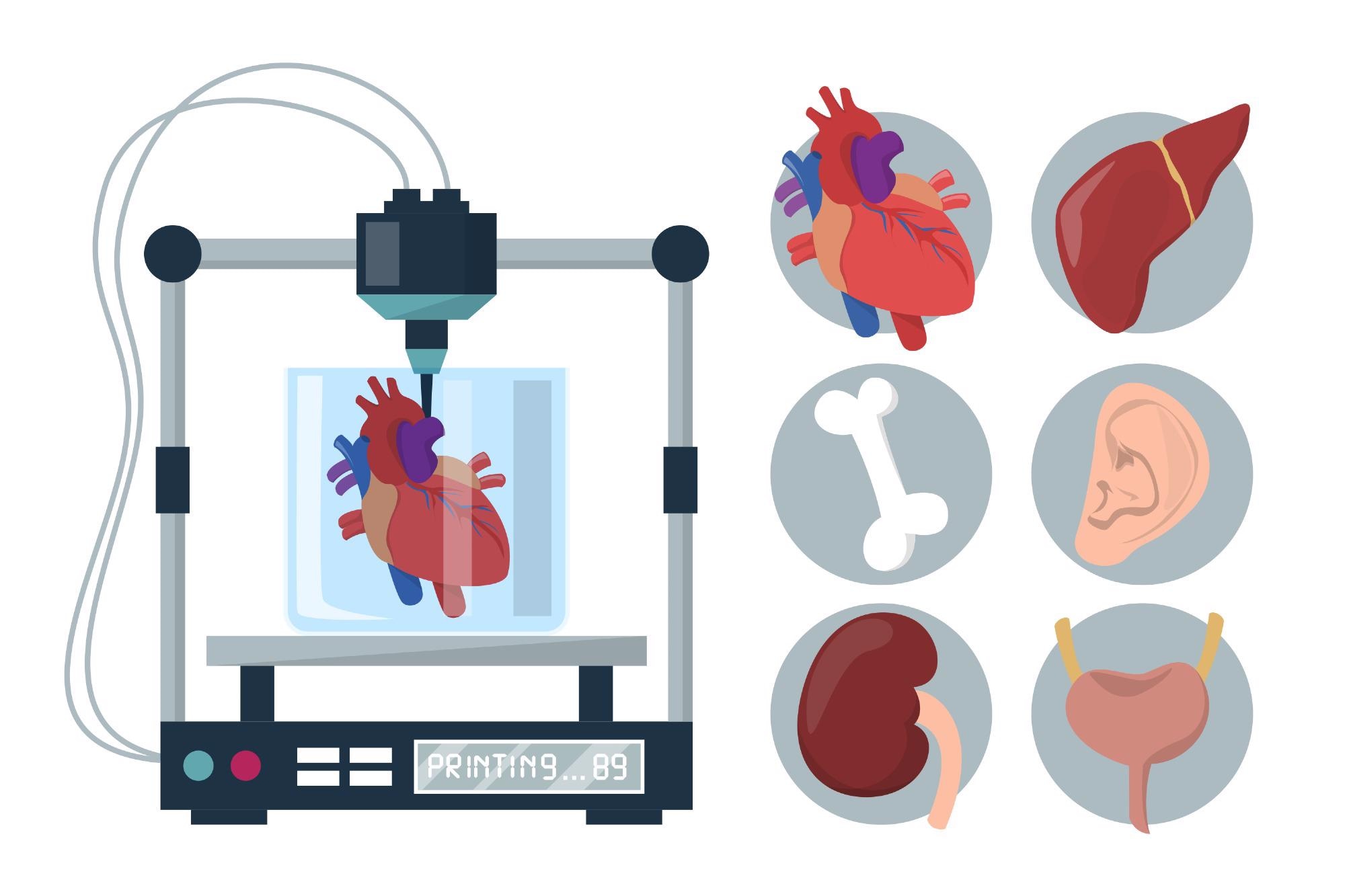3D bioprinting is a form of additive manufacturing similar to conventional 3D printing although it uses bioinks constructed from cells and other biocompatible materials rather than traditional inks to create living structures, layer-by-layer, in a precise manner that can produce incredibly intricate living systems for various important applications.

Image Credit: Derariad/Shutterstock.com
Bioprinting is a new field of science, however, it has already been leveraged into many medical applications. There is a huge potential for bioprinting to grow and aid development in multiple areas of science and medicine. Here, we discuss what bioprinting is, and how it is currently being used.
The process of 3D bioprinting
Bioink is vital to the process of 3D bioprinting, it is this medium that separates it from conventional 3D printing. Scientists can use cells and other biocompatible materials as bioink, which is then ‘printed’ one layer at a time to create living structures.
The process of 3D bioprinting begins with a digital model that will eventually become a living system printed with bioink.
Because bioinks are vastly different from conventional 3D printing inks, the process of 3D bioprinting has been adapted for this purpose. The bioink must be maintained in sterile printing conditions, for example, to ensure the vitality and accuracy of complex tissues created by the process.
Three main stages have emerged as standard 3D bioprinting protocol. The first stage is the pre-bioprinting stage where the digital model of what will be printed is generated. Often, computed tomography (CT) and magnetic resonance imaging (MRI) scans are used to help create this image.
Next is the stage of bioprinting itself. This is where the bioink is loaded into a printer cartridge and deposited layer by layer as per the digital model states. Finally, we arrive at the post-bioprinting stage where the resultant printed parts are stimulated chemically and mechanically to produce stable structures of the biological material.
Why is bioprinting important?
Bioprinting, while still an emerging technology, has already demonstrated that it is widely applicable to the sectors of medicine and bioengineering. In particular, the technology has made rapid advancements in the area of tissue regeneration and reconstruction, particularly in producing cartilage tissue.
In addition to this, bioprinting has already been leveraged in several applications within the fields of medicine and bioengineering. We discuss these below.
Artificial organs:
The need for organs for transplantations is one of the biggest drivers of bioprinting technology. There are more patients in need of organs than there are organs available, meaning that patients face long waiting lists and risk dying while waiting to be matched with a suitable donor.
The possibility of 3D-printed organs opens the door to the potential to produce organs for patients when they are needed. The process will also tackle other issues associated with organ donations, such as the moral and ethical criticism of the process. Additionally, methods of tissue repair are also being developed off the back of the research and development into 3D bioprinting organs.
How to 3D print human tissue - Taneka Jones
Developing tissues for pharmaceutical testing:
Drug development has always faced the issue of having to go through lengthy preclinical trials before new drugs can be tested in humans to ensure their safety before the lives of real patients are put at risk. Unfortunately the options of testing new drugs that don’t involve human patients are in vitro studies and animal studies. Obviously, animal studies have a major drawback as they are generally considered morally and ethically wrong and it is unclear whether results will be replicated in human participants.
In vitro studies also have this limitation, that they only allow the drug to be observed acting on isolated tissues outside of the body, whether complex interactions cannot be predicted. 3D bioprinting offers the opportunity to 3D print tissues and organs to safely investigate the efficacy and safety of novel therapeutics before they are tested on humans. This will hopefully reduce the need for animal trials.
Cosmetic surgery:
Plastic surgery and skin grafting also stand to benefit from 3D bioprinting. Skin tissue can be printed for this purpose, rather than having to source it from other areas of the body, which could make skin grafts more successful.
Regeneration of bone tissue:
Studies have also shown that bone tissue can be 3D printed, which has implications for prosthetics and dental applications.
Cancer research:
Numerous studies have already taken place which demonstrates the vital use of 3D bioprinting in cancer research. For scientists to gain a deeper understanding of various tumor types, they must understand the complex microenvironment surrounding the tumor. Previously, two-dimensional cell cultures had been sued to recreate this environment for the purpose of studying it. However, the complex and dynamic nature of the genuine microenvironment could not fully be replicated in two dimensions.
3D printing allows scientists to produce 3D models replicas of this environment which allows them to be more physiologically relevant. 3D printed tumor microenvironments present a great opportunity to expand our knowledge of how tumors are established and proliferate, as well as how they respond to different treatments.
More applications of 3D bioprinting will likely emerge in the coming years as technology advances. Its potential is yet to be fulfilled given its relatively recent invention, although it is rapidly developing within the space of medicine and bioengineering.
Sources:
- Datta, P., Dey, M., Ataie, Z., Unutmaz, D. and Ozbolat, I., 2020. 3D bioprinting for reconstituting the cancer microenvironment. npj Precision Oncology, 4(1). https://www.nature.com/articles/s41698-020-0121-2
- Li, J., Chen, M., Fan, X. and Zhou, H., 2016. Recent advances in bioprinting techniques: approaches, applications and future prospects. Journal of Translational Medicine, 14(1). translational-medicine.biomedcentral.com/.../s12967-016-1028-0.pdf
- Ozbolat, I., Peng, W. and Ozbolat, V., 2016. Application areas of 3D bioprinting. Drug Discovery Today, 21(8), pp.1257-1271. www.sciencedirect.com/.../S1359644616301106?via%3Dihub
Further Reading